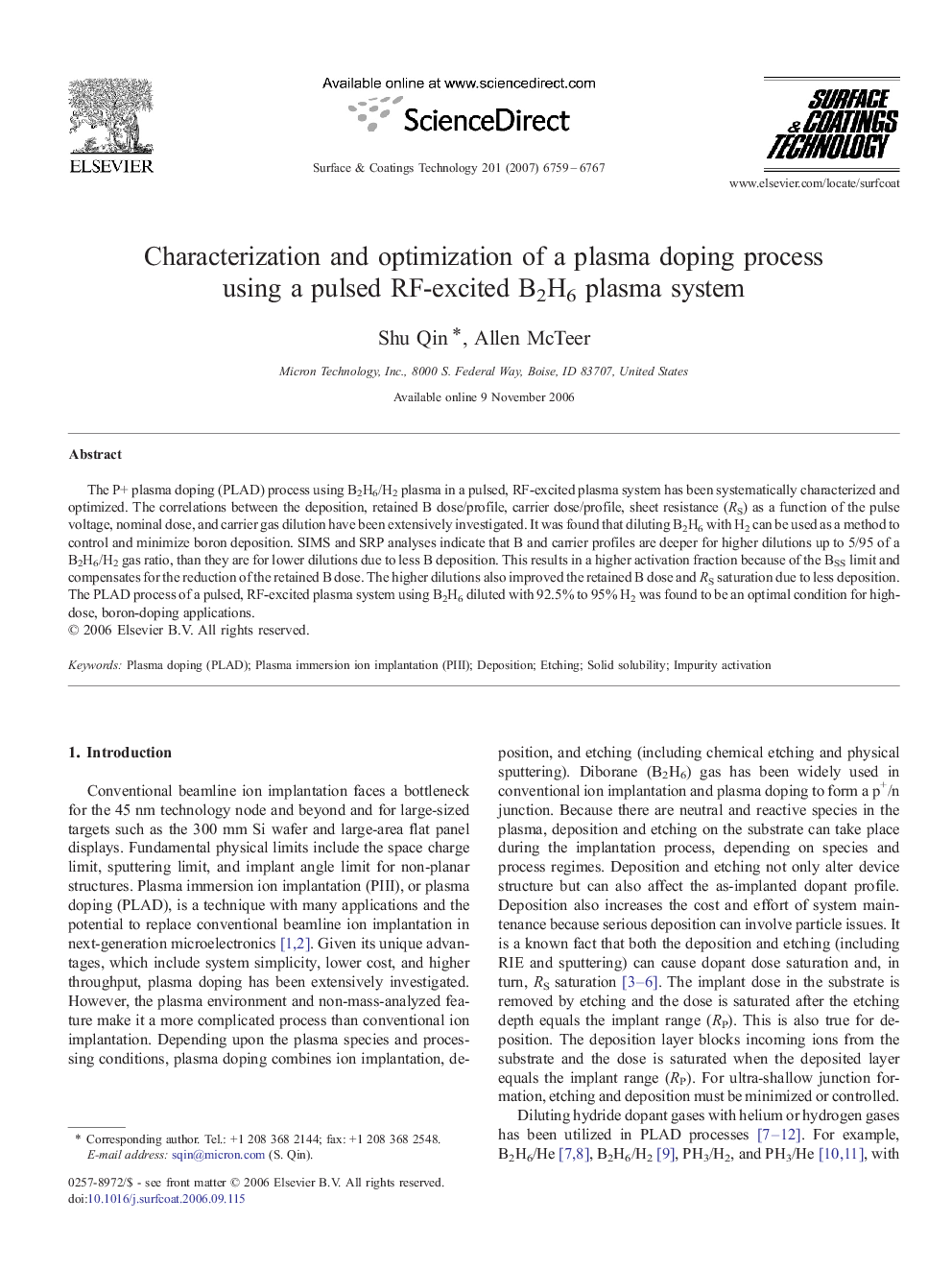| Article ID | Journal | Published Year | Pages | File Type |
|---|---|---|---|---|
| 1660860 | Surface and Coatings Technology | 2007 | 9 Pages |
Abstract
The P+ plasma doping (PLAD) process using B2H6/H2 plasma in a pulsed, RF-excited plasma system has been systematically characterized and optimized. The correlations between the deposition, retained B dose/profile, carrier dose/profile, sheet resistance (RS) as a function of the pulse voltage, nominal dose, and carrier gas dilution have been extensively investigated. It was found that diluting B2H6 with H2 can be used as a method to control and minimize boron deposition. SIMS and SRP analyses indicate that B and carrier profiles are deeper for higher dilutions up to 5/95 of a B2H6/H2 gas ratio, than they are for lower dilutions due to less B deposition. This results in a higher activation fraction because of the BSS limit and compensates for the reduction of the retained B dose. The higher dilutions also improved the retained B dose and RS saturation due to less deposition. The PLAD process of a pulsed, RF-excited plasma system using B2H6 diluted with 92.5% to 95% H2 was found to be an optimal condition for high-dose, boron-doping applications.
Related Topics
Physical Sciences and Engineering
Materials Science
Nanotechnology
Authors
Shu Qin, Allen McTeer,
